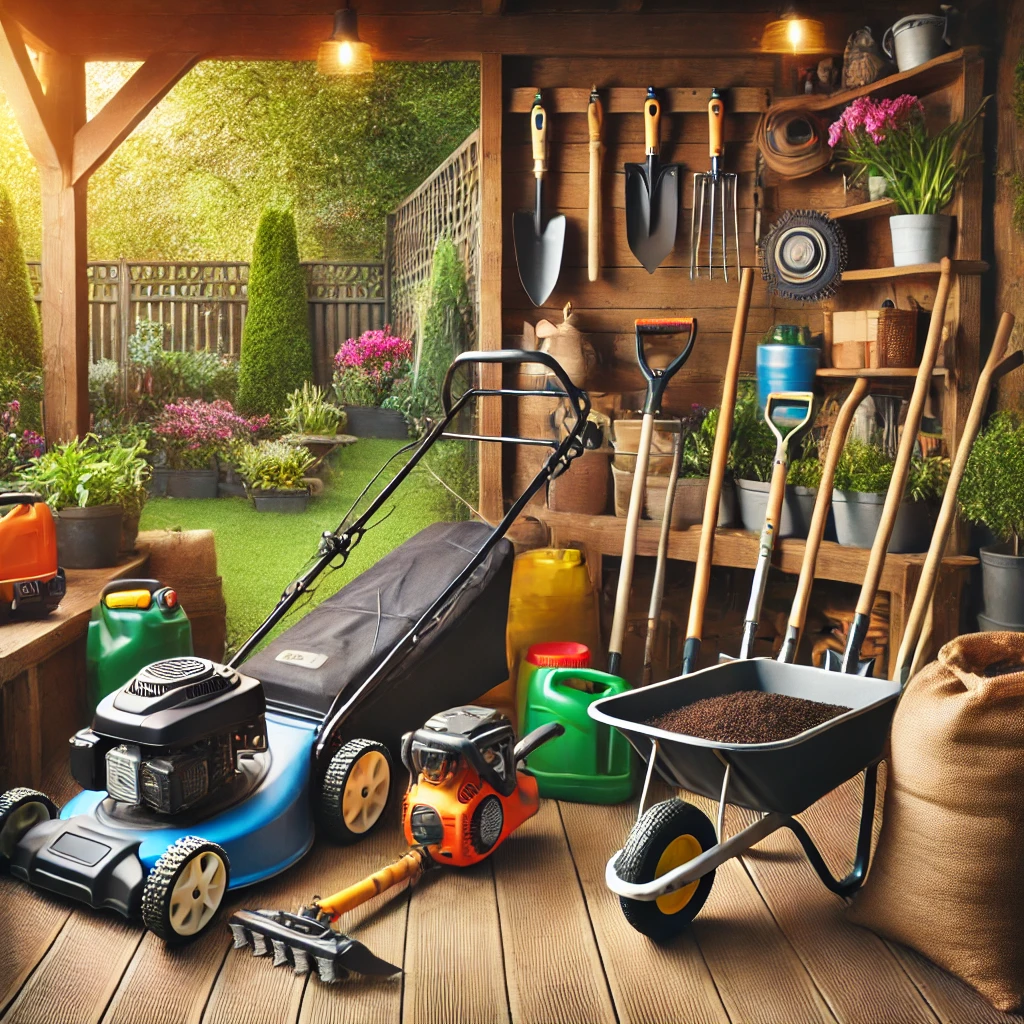Materials of Gardening: Essential Tools and Resources for Successful Gardening
Gardening is a rewarding hobby that connects people to nature and allows them to grow beautiful flowers, vegetables, and herbs. To ensure the best results and a smooth gardening experience, it’s important to have the right materials and tools at hand. These materials help to create an environment conducive to plant growth, promote health and productivity, and make gardening tasks more efficient. In this article, we explore the essential materials needed for gardening, from soil to tools, and their specific functions.
1. Soil and Growing Mediums
Soil is the foundation of every garden. It provides the nutrients, water, and support that plants need to grow. However, different types of plants require different soil conditions, so understanding soil types and amending it appropriately is crucial.
- Topsoil: The uppermost layer of soil, rich in organic matter, is often used for planting. It is available in bulk at garden centers and is usually suitable for most plants.
- Compost: A natural, nutrient-rich material made from decomposed organic matter, compost improves soil fertility, texture, and moisture retention. It’s a great addition to enhance plant growth.
- Peat Moss: Peat moss is often added to improve the texture of soil by making it lighter and better-draining. It helps retain moisture while preventing soil compaction.
- Coco Coir: Made from coconut husks, this material is used to improve drainage and retain moisture in soil. It’s a sustainable alternative to peat moss.
- Potting Mixes: For container gardening, potting mixes are designed to be lighter and more suitable for growing in pots or containers. They usually contain a blend of soil, peat moss, and perlite or vermiculite.
2. Fertilizers and Soil Amendments
Plants require a variety of nutrients for healthy growth, and fertilizers provide these essential nutrients, which are often not present in sufficient quantities in the soil.
- Organic Fertilizers: These fertilizers come from natural sources, such as compost, manure, or fish emulsion. They release nutrients slowly and improve soil structure over time.
- Synthetic Fertilizers: These are chemical fertilizers that provide a quick boost of nutrients, such as nitrogen, phosphorus, and potassium. They are fast-acting but can be harmful if overused.
- Soil Amendments: These materials help to modify the soil’s structure. For example, lime is added to raise the pH of acidic soils, while sulfur is used to lower the pH of alkaline soils.
3. Watering Equipment
Water is essential for plant survival, and efficient watering tools ensure that plants get the right amount of moisture. Overwatering or underwatering can both harm plants, so having the proper watering tools is important.
- Watering Cans: Watering cans are perfect for hand-watering small to medium-sized plants. They come in various sizes and usually have a spout to allow for controlled watering.
- Hoses: For larger gardens, a hose is an essential tool for watering plants. Hoses come with adjustable nozzles for different water pressure and spray patterns.
- Drip Irrigation Systems: These systems deliver water directly to the base of the plants through a network of tubes, minimizing water waste and ensuring deep watering.
4. Gardening Tools
A variety of gardening tools are needed for planting, pruning, digging, and maintaining plants. These tools make gardening tasks easier and more efficient.
- Shovel: A shovel is used for digging, planting, and moving soil. It has a pointed blade that is ideal for breaking through tough soil.
- Trowel: A small handheld tool with a pointed, scoop-like blade, the trowel is used for planting, transplanting, and digging small holes.
- Hoe: Hoes are used for cultivating the soil, breaking up weeds, and preparing the garden bed for planting. They come in various shapes, including the common “draw hoe” and “chop hoe.”
- Pruners or Shears: These are essential for trimming and pruning plants. Pruners come in various sizes and are used for cutting stems and branches.
- Rake: Rakes are used for leveling soil, spreading mulch, and collecting leaves and debris.
- Wheelbarrow: A wheelbarrow helps transport soil, compost, plants, and tools around the garden with ease.
5. Mulch
Mulch is a material applied to the surface of the soil to retain moisture, suppress weeds, and regulate temperature. It also adds organic matter to the soil as it decomposes.
- Organic Mulch: Organic mulches, such as straw, wood chips, bark, or leaves, break down over time and add nutrients to the soil.
- Inorganic Mulch: Inorganic mulches, such as gravel, stones, or rubber, do not decompose, making them suitable for low-maintenance gardens.
6. Pots, Planters, and Containers
For container gardening or plants that need to be moved around, pots and containers are essential.
- Clay Pots: These traditional pots are durable, provide good drainage, and allow for air circulation around the roots.
- Plastic Pots: Lightweight and inexpensive, plastic pots are versatile and come in a variety of shapes and sizes.
- Hanging Baskets: These are perfect for growing plants like petunias, ferns, and ivy in small spaces or for creating decorative displays.
7. Protective Materials
Plants can be susceptible to pests, weather conditions, and diseases. Protective materials help to keep plants safe and healthy.
- Row Covers: These lightweight fabrics can be draped over plants to protect them from pests, frost, or extreme weather.
- Garden Netting: Used to protect plants from birds or small animals, garden netting can be placed over bushes or trees.
- Garden Stakes and Cages: These materials help support tall or vining plants, such as tomatoes or climbing roses, to prevent them from falling over or becoming damaged by the wind.
Conclusion
Gardening requires a variety of materials to create an environment where plants can thrive. The right soil, fertilizers, watering tools, and gardening equipment make it easier to grow healthy, beautiful plants. Additionally, materials such as mulch, pots, and protective covers can help ensure that plants are well-maintained and protected from external factors. By selecting the appropriate materials and tools for the specific needs of your garden, you can enjoy a productive and fulfilling gardening experience.

